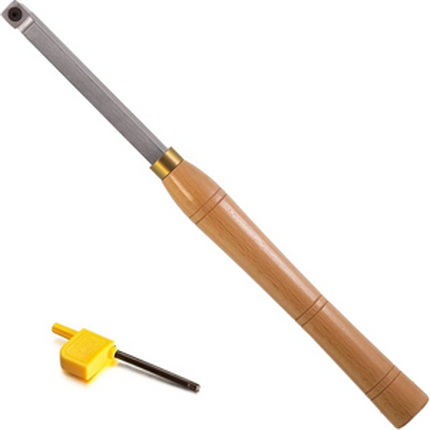Content Menu
● Understanding Carbide Tipped Chisels
● Advantages of Carbide Tipped Chisels
● Types of Projects Suited for Carbide Tipped Chisels
>> 1. Woodworking Projects
>> 2. Stone Carving
>> 3. Composite Material Work
>> 4. Metalworking
>> 5. Restoration Projects
● How to Use Carbide Tipped Chisels Effectively
● Conclusion
● Frequently Asked Questions
>> 1. What materials can I use carbide tipped chisels on?
>> 2. How do I maintain my carbide tipped chisels?
>> 3. Can I sharpen carbide tipped chisels?
>> 4. Are carbide tipped chisels worth the investment?
>> 5. What is the best way to use carbide tipped chisels?
Carbide tipped chisels have become a go-to tool for woodworkers, stone carvers, and artisans due to their durability and exceptional performance. Unlike traditional steel chisels, carbide tipped chisels maintain their sharpness longer and can withstand higher temperatures, making them ideal for a variety of projects. This article will explore the types of projects best suited for carbide tipped chisels, highlighting their advantages and providing insights into their effective use.

Understanding Carbide Tipped Chisels
Carbide tipped chisels feature cutting edges made from tungsten carbide, a material renowned for its hardness and resistance to wear. This composition allows these chisels to perform exceptionally well in demanding applications. The tips can be used on various materials, including wood, stone, and composites.
Advantages of Carbide Tipped Chisels
1. Longevity: Carbide tipped chisels last significantly longer than their steel counterparts. They can maintain their cutting edge up to 100 times longer, reducing the need for frequent sharpening.
2. Precision: These chisels provide cleaner cuts and finer finishes, making them suitable for detailed work.
3. Versatility: They can be used across different materials, including hardwoods, softwoods, and even some masonry applications.
4. Temperature Resistance: Carbide's ability to withstand high temperatures allows for faster machining without compromising performance.
Types of Projects Suited for Carbide Tipped Chisels
1. Woodworking Projects
Carbide tipped chisels excel in woodworking tasks such as:
- Joinery: Creating precise joints in furniture making.
- Carving: Detailed carving work where precision is crucial.
- Trimming: Trimming edges and surfaces for a smooth finish.
2. Stone Carving
For stone carvers, carbide tipped chisels are invaluable:
- Shaping: Shaping stones with intricate designs.
- Detail Work: Achieving fine details in sculptures or architectural elements.
3. Composite Material Work
Carbide tipped chisels are also effective when working with composite materials:
- MDF and Plywood: Cutting and shaping MDF or plywood without chipping.
- Plastic: Carving or trimming plastic components in manufacturing.
4. Metalworking
While not as common as wood or stone applications, carbide tipped chisels can be used in metalworking:
- Deburring: Removing sharp edges from metal parts.
- Finishing: Providing a smooth finish on metal surfaces.
5. Restoration Projects
When restoring furniture or antiques:
- Repairing Joints: Precision work on old joints that require careful handling.
- Refinishing: Removing layers of old finish without damaging the underlying material.

How to Use Carbide Tipped Chisels Effectively
To maximize the benefits of carbide tipped chisels, consider the following tips:
1. Proper Angle: Maintain the correct angle while using the chisel to ensure effective cutting and reduce wear on the tip.
2. Light Pressure: Use light pressure to allow the chisel to do the work; forcing it can lead to damage.
3. Regular Maintenance: Even though carbide tips require less frequent sharpening, regular cleaning and inspection will prolong their life.
Conclusion
Carbide tipped chisels are an essential tool for various projects across woodworking, stone carving, composite material work, metalworking, and restoration tasks. Their durability, precision, and versatility make them an excellent choice for both professionals and hobbyists alike. By understanding the types of projects best suited for these tools and employing effective techniques, users can achieve superior results in their work.

Frequently Asked Questions
1. What materials can I use carbide tipped chisels on?
Carbide tipped chisels are suitable for wood, stone, composite materials like MDF and plywood, and even some metals.
2. How do I maintain my carbide tipped chisels?
Regularly clean your chisels after use and inspect them for any signs of wear or damage. Store them in a dry place to prevent rusting.
3. Can I sharpen carbide tipped chisels?
While they require less frequent sharpening than steel chisels, they can be sharpened using specialized diamond sharpening tools.
4. Are carbide tipped chisels worth the investment?
Yes, due to their longevity and performance advantages over steel chisels, they often save money in the long run by reducing replacement costs.
5. What is the best way to use carbide tipped chisels?
Maintain a proper angle during use, apply light pressure, and allow the chisel to do the cutting without forcing it through material.
















